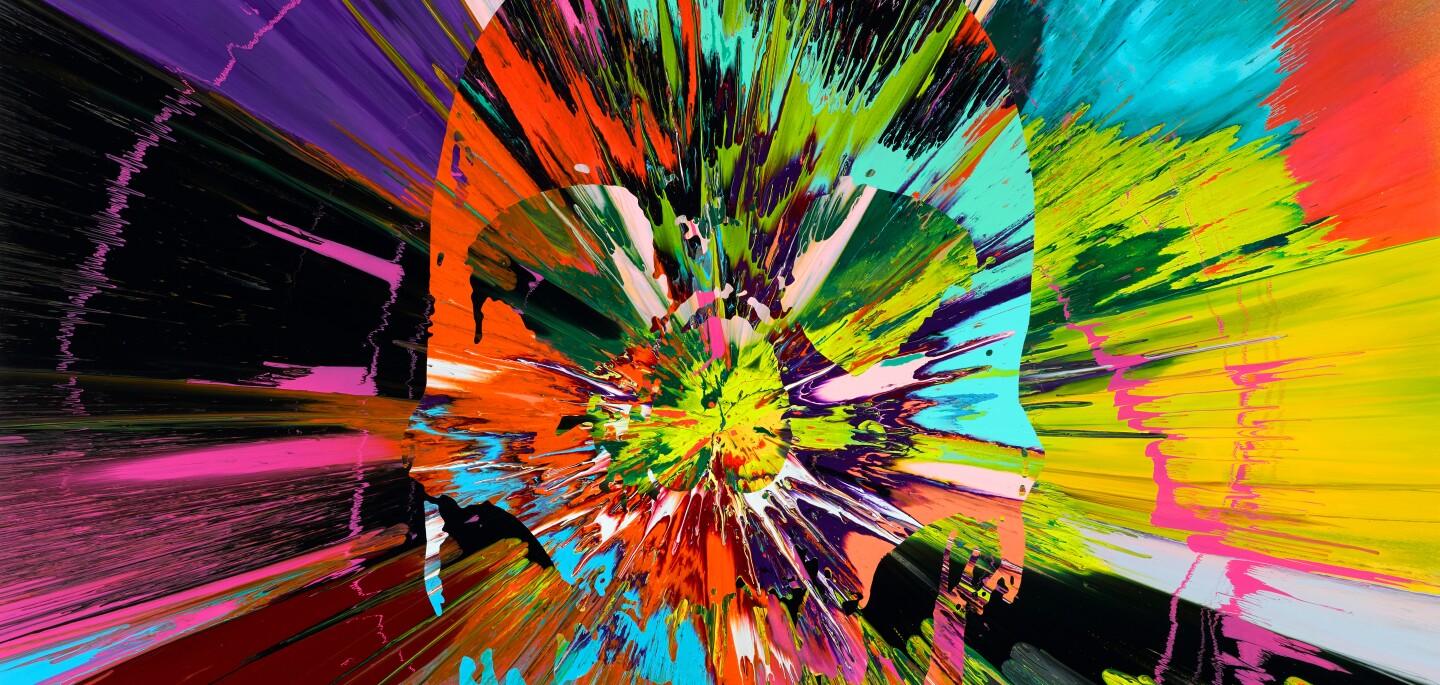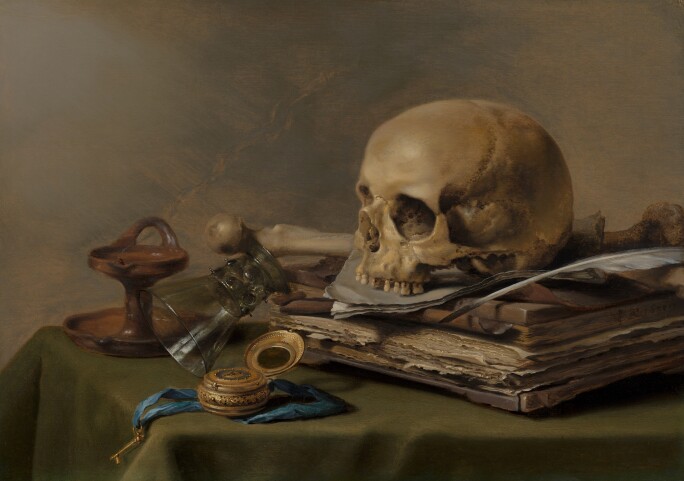Damien Hirst’s fascination with human nature’s fear of the inevitability of death is brought to a frenzied summit in Beautiful Apocatequil Narcissism Painting – a subset of the artist’s iconic Spin Paintings, which incorporates the image of a skull into the pattern of the paint. First institutionally exhibited in 2009 at the PinchukArtCentre in the Ukraine, this new body of work represented the ultimate synthesis of two of Hirst’s most important motifs; the skull, which bears reference to his celebrated sculpture For the Love of God and the intrinsic importance of death in his practice, and his signature spin technique.
“The Spin Paintings gather and amalgamate the individuality of every individual colour, introducing a mechanical rotating movement at the moment of execution, to make the colours participate in a primordial state, where order and creation dissolve and disengage from the meditation of thought and representation, to become pure expression of the basic and vital gesture of painting and its mythology”
The first Spin Paintings were produced on rectangular canvases in Hirst’s Brixton studio in 1992. Two years later he introduced the concentric canvases that are now widely associated with the series. Influenced by the post-modern privileging of chance and the aleatory, Hirst exerts a limited amount of control in the creation of these works. By pouring a succession of different hues of household emulsion paint onto a rapidly rotating canvas, Hirst creates variegated surfaces of gravity-informed colour that bespeak the centrifugal energy of their execution. Emptied over the canvas in a manner akin to Jackson Pollock as captured in the iconic photographs by Hans Namuth, Hirst’s application of paint combined with the mechanical spin of the surface is undeniably performative in its vigour. This kinetic energy is recorded in the final painting, the movement of which, according the Hirst, “sort of implies life” (Damien Hirst cited in: Damien Hirst and Gordon Burn, On the Way to Work, London 2001, p. 221).


The lengthy and evocative titles of these works typically contain a staccato of rhythmical adjectives that mirror their chaotic facture and resultant compositions. Extolling an unbridled celebration of colour and movement, the Spin Paintings offer a chromatic symphony that is at once harmonious and in disarray. As Eduardo Cicelyn, the director of the MADRE Museum of Naples, has explained, “The Spin Paintings gather and amalgamate the individuality of every individual colour, introducing a mechanical rotating movement at the moment of execution, to make the colours participate in a primordial state, where order and creation dissolve and disengage from the meditation of thought and representation, to become pure expression of the basic and vital gesture of painting and its mythology” (Eduardo Cicelyn in: Exh. Cat., Naples, Museo Archeologico Nazionale, Damien Hirst: The Agony and the Ecstasy. Selected Works from 1989 - 2004, 2004-05, p. 42).
Driven by a desire to develop a populist approach to painting, Hirst cited Blue Peter – a UK children’s television programme that he watched as a nine-year-old in his home city of Leeds – as the inspiration for the Spin Paintings: “I grew up with Blue Peter. I got my idea for the Spin Paintings from an episode in the 1970s… I remember thinking: ‘That’s fun’, whereas art is something more serious… I just thought: ‘Why does it have to be like that?’... Actually, the better art is the art made with the spin machine” (Damien Hirst cited in: Mark Brown, 'Damien Hirst credits Blue Peter with idea for his controversial spin paintings', The Guardian, 29 August 2012, online). Reminding us of Warhol's paint-by-numbers works, Hirst preserves a childlike sense of wonder in his practice; indeed, as the present work attests, the Spin Paintings embody the euphoric ecstasy of child-like exploration. Through a destruction of preordained rules and above all an approach that oscillates between rebellion and jest, in Beautiful Apocatequil Narcissism Painting Hirst eloquently articulates the notion of uncertainty intrinsic to human experience and life itself.